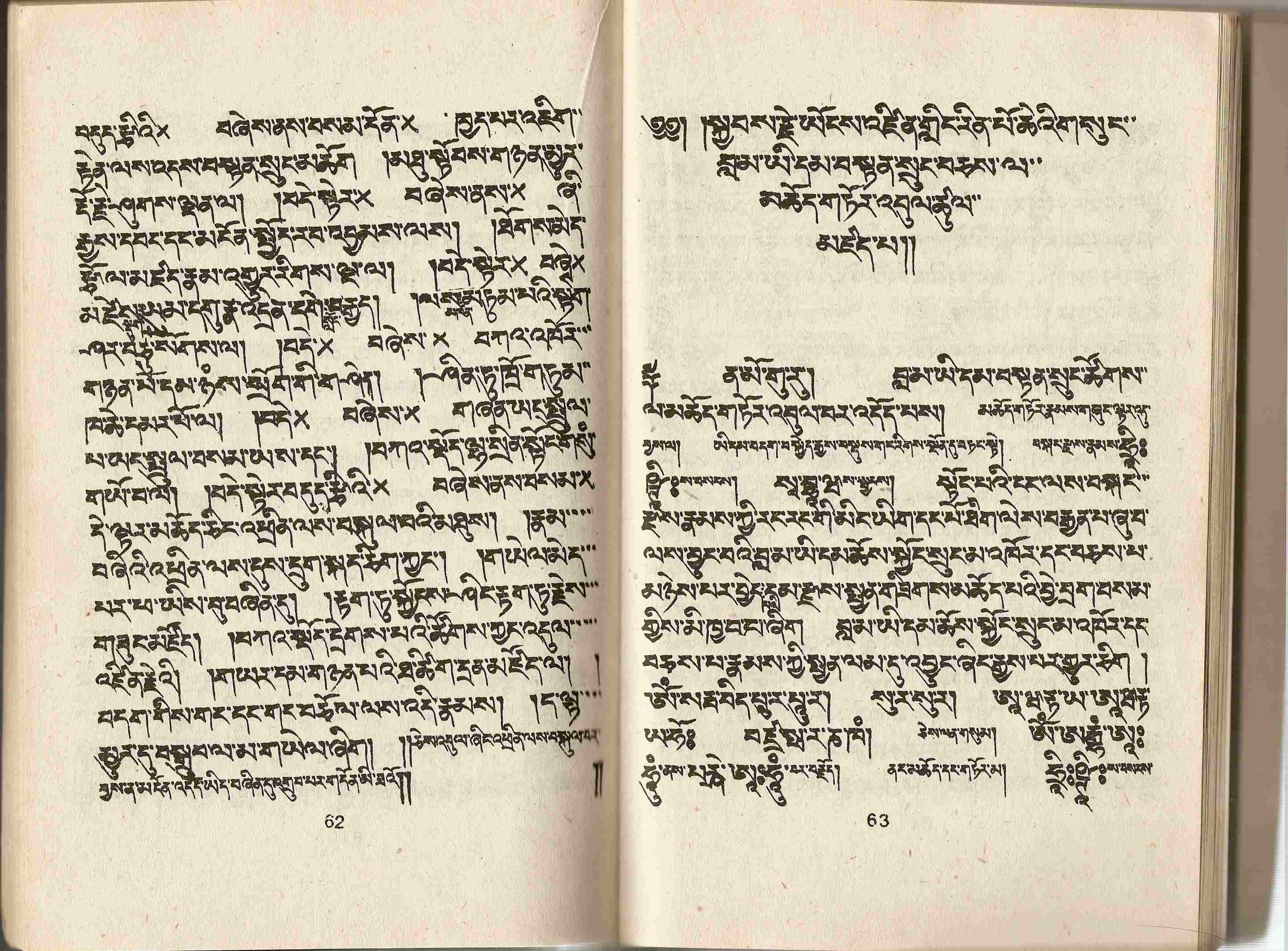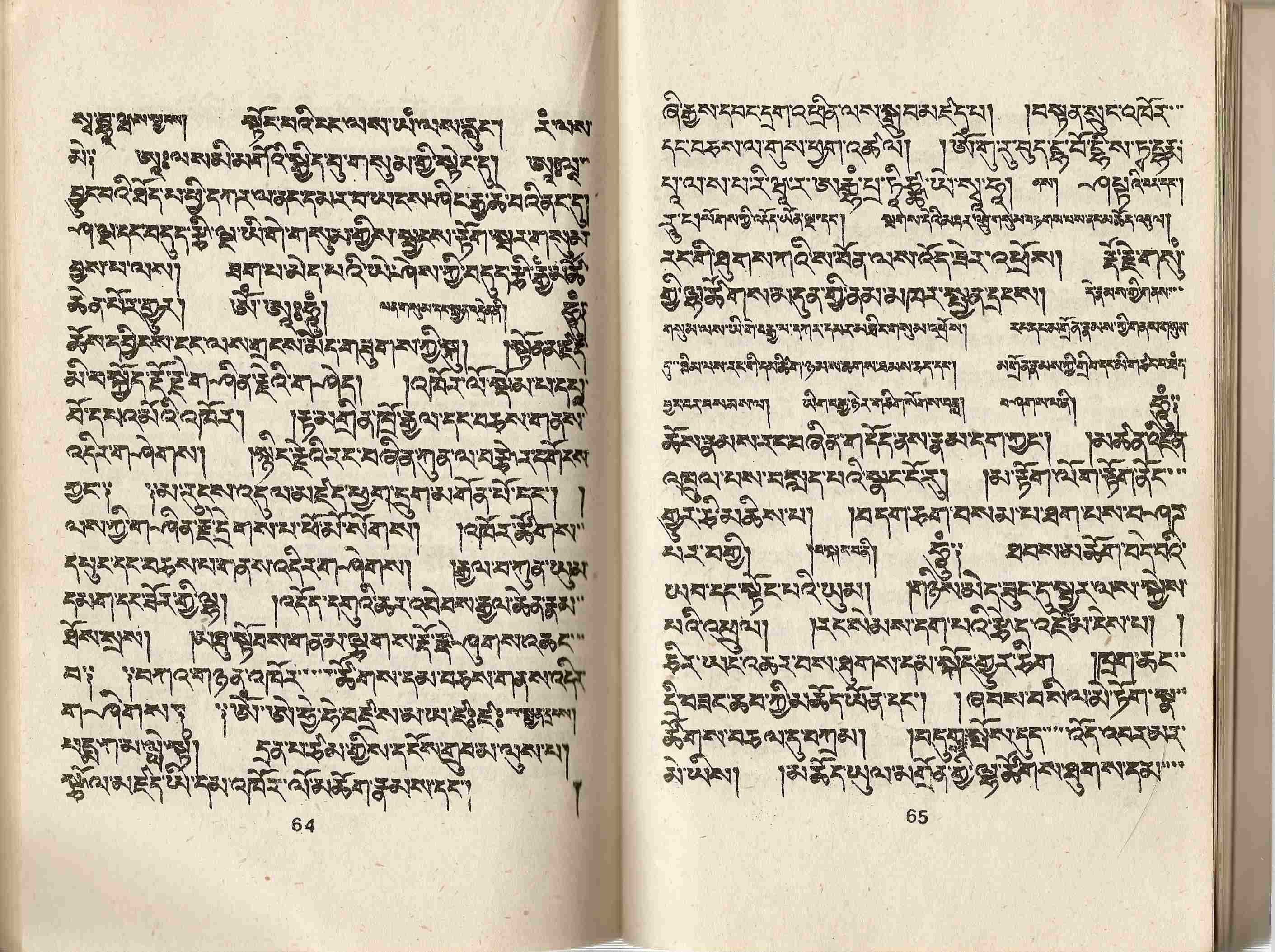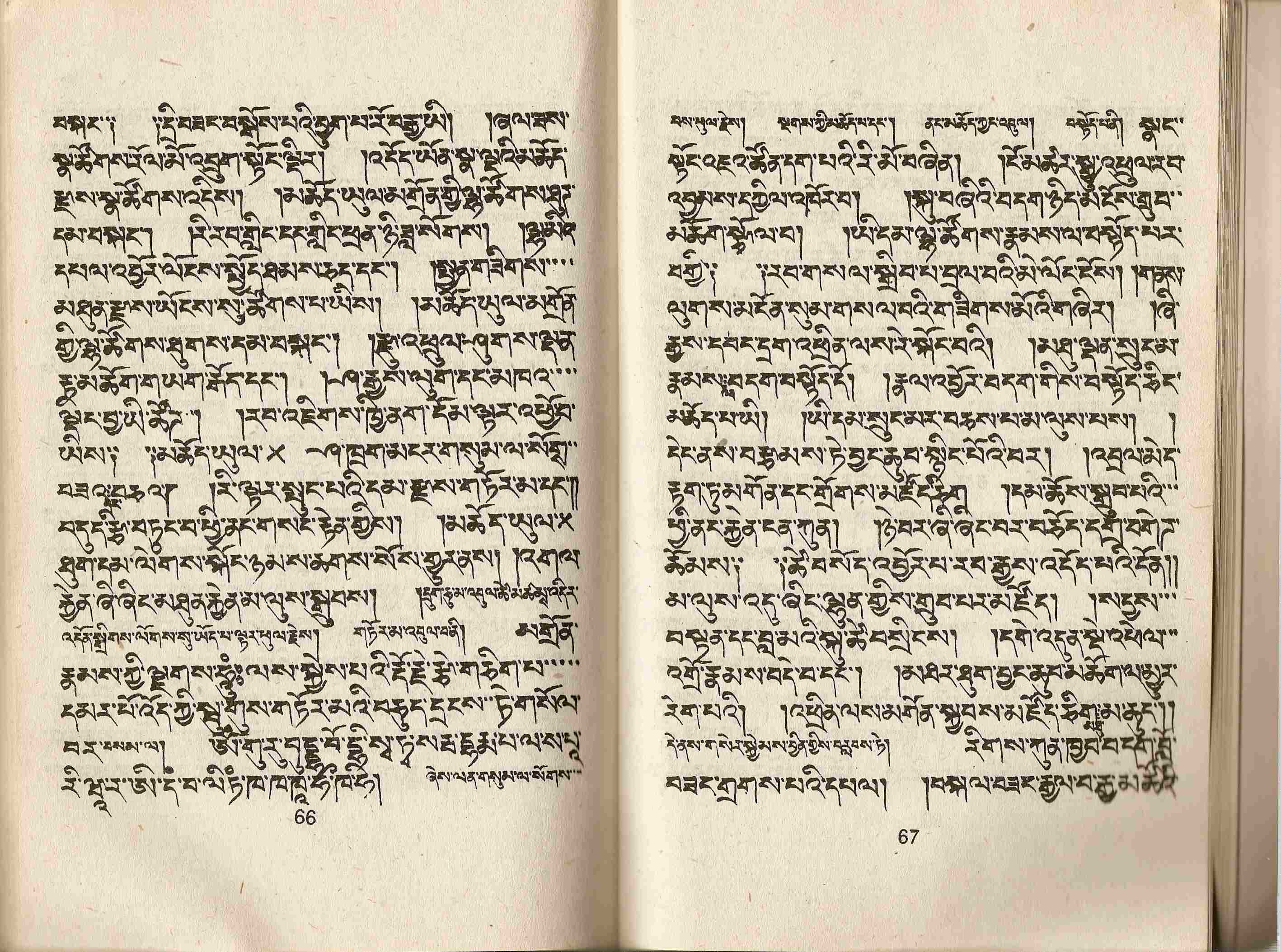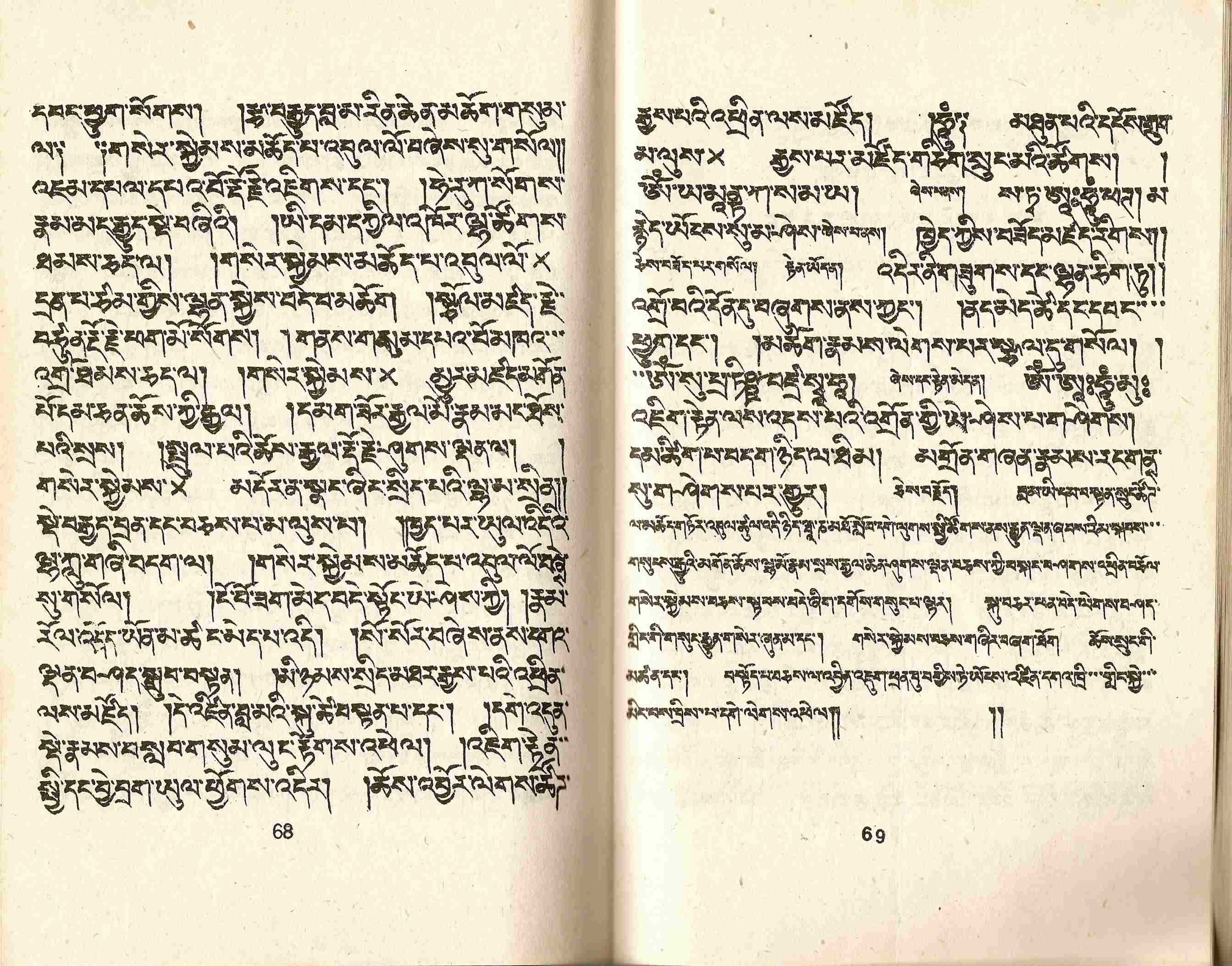Kyabje Ling Rinpoche (1903-1983)
Kyabje Ling Rinpoche, 97th Ganden Throne Holder, and yongs 'dzin to the 14th Dalai Lama was born 1903 in Yabphu near Lhasa. Yabphu is a holy place of Chakrasamvara and Vajrayogini, being shaped like a double triangle. It also contained a precious image of Naropa’s Vajrayogini that was to known to have spoken many times. Since the previous life of Ling Rinpoche was a yongs 'dzin to the 13th Dalai Lama, his reincarnation was confirmed by 13th Dalai Lama and he was enthroned in Lhasa at an early age.
When he was 10 years old, he entered Drepung Loseling and began studying the five major texts. At 13 he received novice ordination from the 13th Dalai Lama. Regarding the study of the five major texts, Ling Rinpoche writes:
These basic texts of each of the five main texts, as well as the commentaries by Je Rinpoche, his son-like disciples, and Panchen Sonam Dagpa are memorized. We were expected to comprehend the meaning of both the root texts and their commentaries, to discuss all their difficult points, and to clearly analyze and understand the different points of view of the principal Indian and Tibetan masters. Thus I studied thoroughly, debated with wise and intelligent dharma friends and gained considerable knowledge.
In his autobiography, Ling Rinpoche gives a long list of specific texts that were studied and debated during this time. First, Ling Rinpoche mentions the study of Prajnaparamita in relation to Maitreya’s Five Treatises given to Asanga, supplemented by Abhisamayalamkara. Also studied were relevant texts by Haribhadra, Jamgon Tsongkhapa, Gyaltsab Je and Panchen Sonam Dragpa. This also included “the eight hidden meanings of the Prajnaparamita which are the eight categories and seventy topics.”
He also recollects that Gomang and Loseling colleges (both part of Drepung) held regular debate sessions together that he attended. In one case, he debated with Geshe Gomang Gagshing on Nagarjuna’s Six Logic Texts of Madhyamika philosophy. According to Ling Rinpoche, these texts “establish the direct meaning of emptiness as presented in the Prajnaparamita Sutra.” For studying Madhyamika texts additional to those by Nagarjuna were by Je Tsongkhapa and Panchen Sonam Dragpa.
Yet, Ling Rinpoche states “in order to adequately understand the profound view of Madhyamika philosophy one must also study Pramana (valid cognition).” To this end, among other texts Dharmakirti was studied in the higher logic class, about which Ling Rinpoche states that Dharmakirti’s commentary on Pramana “logically proves the non-deceptive nature of the Enlightened Ones and their teachings which lead to liberation and omniscience.” Traditionally in Tibet, Jang was the place for studying Pramana during the winter, involving long debate sessions, as related by Ling Rinpoche: “it was extremely cold at Jang our hands cracked, but we could hardly feel the blood dripping because our concentration was totally involved in the debate.” According to Ling Rinpoche, the most important commentaries to Dharmakirti’s Pramanavartika are by Panchen Sonam Dragpa and Gyaltsab Dharma Rinchen.
Next, of the five great subjects is Vinaya which, according to Ling Rinpoche, “teaches the way to obtain vows for those who have not yet obtained them, and how to restore when they are broken. The teachings on the three points of advice, the objections, the practices and the permissions are clearly revealed in Gunaprabha’s root and commentary texts on the Vinaya Sutra.” According to Ling Rinpoche, in this additional texts by Kunkhyen Tsonawa, Gendun Drup, Panchen Sonam Dragpa are studied.
Finally, particularly for metaphysics Abhidharmakosa (Treasury of Abhidharma) was studied. Abhidharmakosa was created by Vasubhandu who incorporated seven Abhidharma texts based on the practice of the Hinayana. Commentaries to this that were studied included those written by Chim Jampel Yang and Gendun Drup.
In 1922, Ling Rinpoche took full ordination from the 13th Dalai Lama. He was instructed to begin his geshe degree examination at age 20, an unprecedented young age. At age 22 he obtained the Geshe Lharampa degree. He then entered the Upper Tantric College and studied all four classes of Tantra, especially Heruka, Guhyasamaja and Yamantaka. For Guhyasamaja he relied on many texts including Panchen Sonam Dragpa’s text on the development and completion stage, commentaries by Chandrakirti and Jamgon Tsongkhapa among other texts. He also studied Jamgon Tsongkhapa’s commentary on Chakrasamvara Clarifying Hidden Meanings. When he was 23 he was given first position in the tantric examinations. When he was 24 he became the disciplinarian for the Upper Tantric College for four months.
In addition to the classical Gelug education, Ling Rinpoche also received many teachings from the greatest masters of that time. At age 12, he received Lam Rim Chenmo teachings from the 13th Dalai Lama and Solitary Hero Yamantaka and Vajrayogini initiations from Je Pabongkha. About his teachers after graduating from the Upper Tantric College Ling Rinpoche writes:
Among my teachers at this time was Je Pabong Khapa Dechen Nyingpo, manifestation of the glorious Chakrasamvara (Pal Khor Dompa). My other teachers were the great Kyabgon Yongzin Sikyong Tradag Dorje Chang, Kyabje Yongzin Trijang Dorje Chang, Kyabje Khangsar Dorje Chang, Chone Lama Rinpoche Losang Gyaltsen Palzangpo and others. In short, I studied with thirty scholars and practitioners. Their kindness cannot be repaid even by holding them on my head for infinite lifetimes.
When he was 28, he went to southern Tibet, gave teachings and visited many pilgrimage places. When the 13th Dalai Lama passed away, Ling Rinpoche was involved in creating the golden stupa for his relics. Next, at age 34 he was appointed as the abbot of the Upper Tantric College. Soon after he was appointed as the mtshan zhabs to the 14th Dalai Lama. In 1941 he was appointed as the junior yongs 'dzin to the Dalai Lama, and in 1949 he became the Sharpa Choeje. In 1953 he became the senior yongs 'dzin to the Dalai Lama and imparted to him teachings on Lam-Rim and tantric teachings on Heruka, Guhyasamaja and Yamantaka. In 1954 he gave full ordination to the Dalai Lama during the Great Prayer Festival.
In 1954 he visited China with the Dalai Lama, after which they visited Kubum Jampa Ling in Amdo. In 1956 for the 2500th anniversary of the Buddha’s Parinirvana, he visited Bodh Gaya and other pilgrimage places in India with the Dalai Lama. Upon returning to Tibet, he gave many teachings on tantra including on the development and completion stages of Vajrabhairava and Guhyasamaja. In 1959 he fled to India after the Chinese occupation of Tibet.
In 1960 upon the passing of the previous Ganden Throne Holder in Tibet, Ling Rinpoche was appointed as the 97th Ganden Throne Holder. He ascended the throne at Gaden Phelgye Ling monastery. He visited Switzerland and England and gave many teachings. In 1969 he gave teachings on Lam-Rim Chenmo at the request of Guru Deva Rinpoche at Gaden Phelgye Ling monastery. In 1972 he visited the three monastic seats of Sera, Ganden, and Drepung in South India and gave many teachings there. He continued to turn the Wheel of Dharma until his passing in 1983. In the conclusion of his autobiography, Ling Rinpoche states:
Until now I have dedicated my stay in India to the service of restoring the waning doctrine of the Buddha and to the teachings of Second Buddha’s (Jamgon Tsongkhapa) doctrine, the stainless views of both sutra and tantra which are like pure gold.
Source: The Autobiography of Kyabje Ling Rinpoche. The Tibet Journal, vol. 8, no. 3, pp. 45-61.
The ritual below was written by Kyabje Ling Rinpoche at the request of the Gelug assembly at Varanasi University for a simple way to do fulfillment, confession, request for activity and serkyem for Mahakala, Dharmaraja, Palden Lhamo, Vaishravana and Dorje Shugden. Source: Jam mgon rgyal ba'i bstan srung rdo rje shugs ldan gyi 'phrin bcol phyogs bsdus bzhugs so. Bylakuppe, India: Ser smad gsung rab 'phrul spar khang (1992), pp. 63-69.




